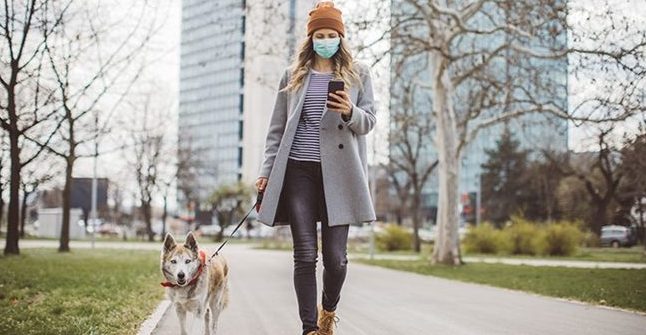 Connecting citizens to government means a lot of things, most notably, informing, engaging and enabling action. It means providing easy ways for residents to interact with agencies and consume information that is relevant to them.
Connecting citizens to government means a lot of things, most notably, informing, engaging and enabling action. It means providing easy ways for residents to interact with agencies and consume information that is relevant to them.
Virtual Engagement Pathway
Virtual engagement routes existed to connect residents to their government prior to COVID-19. Many community members already saw value in connecting to the latest city news, reporting neighborhood code compliance issues, or learning about community events. Citizen portals facilitated public meeting notification, agendas and minutes. Apps that provided government directories for council contacts facilitated the exchange of opinions and enhanced digital discourse. Mobile apps like the one in Henderson, Nevada, for example, allowed residents to pay a utility bill, report an issue, register for recreation classes, find parks, and even apply for a job. Essentially, these things put city hall right in the hands of the public.
A one-stop shop for engaging with government became a necessity overnight as the pandemic created new urgency around business continuity, sharing reliable information, and gathering information in turn. From providing community-level COVID-19 case statistics to sharing business statuses and public health rules, getting information out as swiftly as it changed became the new norm.
COVID-19 Public Portals
As social distancing measures continue, government’s need for enhanced community connections has never been greater. Governments must deliver timely information to constituents while also enabling two-way communication in new, digital ways.
Buffalo, New York, for example, hosts a robust COVID-19 site for public engagement and actionable insight. The centralized hub gives the public access to 12 categories of COVID-19 resources. It also connects the city with data from Johns Hopkins University, the U.S. Centers for Disease Control and Prevention (CDC), and other verified sources.
Buffalo’s Approach
The city’s two-pronged approach in its response to COVID-19 engages both internal and external constituencies. The easy-to-navigate and mobile-responsive public hub surfaces coronavirus response resources. It also provides a way to connect and access the data needed to create and share internal reports and dashboards to commissioners and executive-level staff for use in decision-making. Communicating externally with transparency quells misinformation and fear. Internally, it’s a crucial component to conducting analyses, informing stakeholders and making effective decisions.
“One of the issues the city has faced, health care providers have faced, and emergency first responders have faced, is misinformation that has been presented as fact,” said Buffalo Mayor Byron Brown. “It’s critically important that people get good information, accurate information, so they can make the proper health care decisions for themselves that have an impact not only on their health, but their family members and their friends.”
Real-time collaboration around accessible data has been put to use in risk analysis for volunteer deployment such as mapping vulnerable populations with higher rates of preexisting conditions, concentrations of food-insecure seniors or seniors living alone, where to find free mask or meal distribution centers, tracking 311 calls, and even targeting messaging to improve response rates for the 2020 U.S. Census.
Leveraging Citizen Engagement Apps
Other jurisdictions are using citizen engagement apps to strengthen community connections. Moose Jaw, Saskatchewan, Canada, drove widespread adoption of its civic engagement app through a story-sharing contest. Santa Ana, California, likewise wove its civic app’s use cases into social media stories, successfully promoting resident engagement. Kerrville, Texas, added a COVID-19 response hub button in its civic app to give residents localized information through an easy access point. Addison, Illinois, supported local restaurants by adding a directory in its civic engagement app showing up-to-date curbside pick-up and takeout options. Some jurisdictions may even be imagining how apps can be used as public buildings reopen for outside check-in and queuing.
Continued Tech Leaps
These and other creative uses have proven software can be used beyond its original intent. The need to maximize existing technology and accelerate innovation presents an opportunity for governments to create new efficiencies beyond the pandemic.
Residents, too, will increasingly turn to consuming government information from push notifications in apps, SMS messages, emails, or opting into news alerts in interest areas from council meetings to parks and recreation. With a new demand for localized information and news, citizens have a newfound interest in connecting with their governments. Government’s ability to partner with community members to innovate, create and carry out solutions hangs on the practice of engagement.
Jurisdictions that build and maintain virtual connections will benefit from more educated, engaged constituents and a stronger community fabric even after the pandemic fades.
Meredith Trimble is a former municipal official and Town Council Acting Chair, who focused on strategic planning, annual budgeting and bonded infrastructure projects. Her government experience also includes posts in both federal and state-level executive branch agencies: Associate Editor of the U.S. Federal Election Commission’s FEC Record; and Director of Education for the Connecticut Office of State Ethics. In her current role as a Senior Content Specialist with Tyler Technologies, Inc., she writes content to help empower those who serve the public. Her current focus is to help facilitate data-enabled organizations as well as to create connections between governments and those they serve.





Leave a Reply
You must be logged in to post a comment.